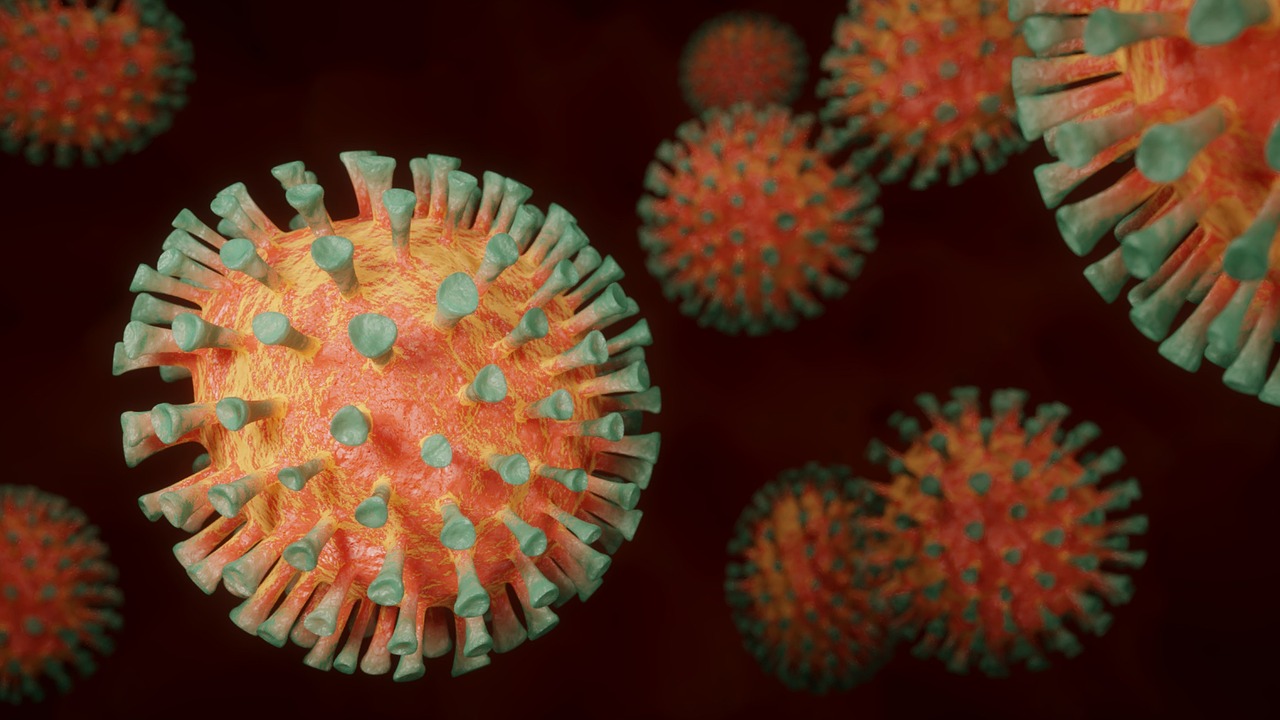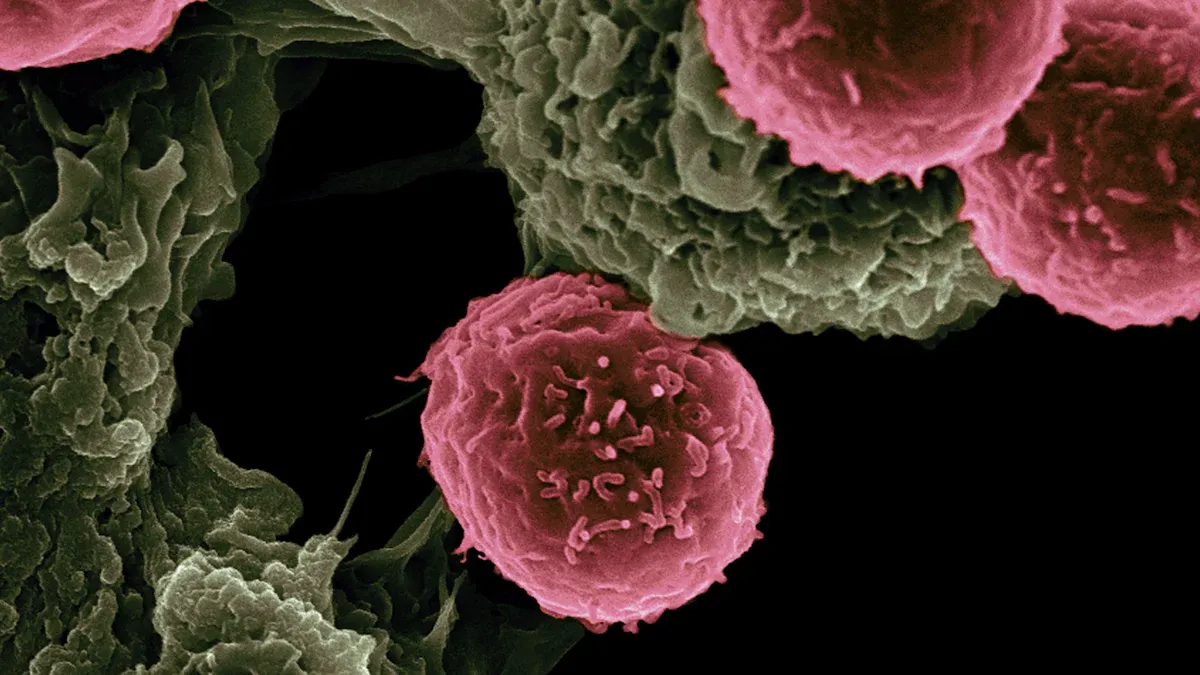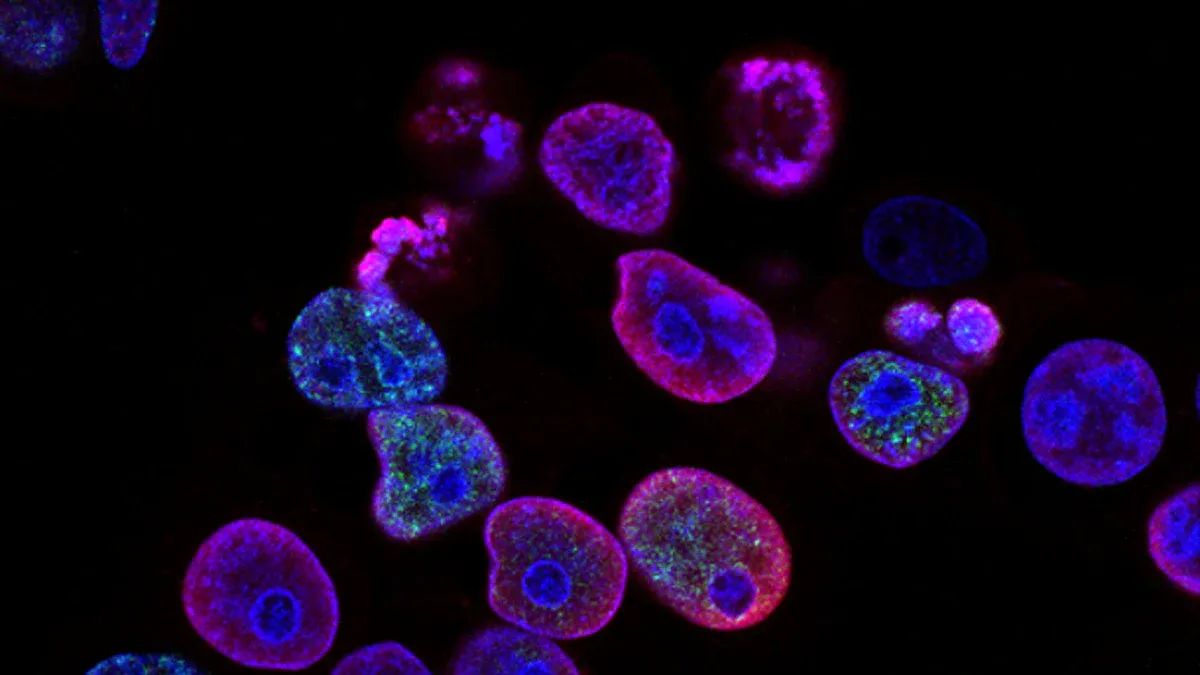What Is Hairy Cell Leukemia and Its Symptoms

Hairy cell leukemia is a rare type of blood cancer that weakens your immune system by affecting B cells, a kind of white blood cell. Each year, only 600 to 800 new cases are reported in the United States, making it an uncommon condition. It accounts for just 1 to 2% of all adult leukemias. The disease gets its name from the unique "hair-like" projections on the cancerous cells. These projections, formed by the cytoplasm, give the cells their distinctive appearance under a microscope.
Key Takeaways
Hairy cell leukemia is a rare blood cancer. It mainly affects B cells, making the immune system weaker and raising the chance of infections.
Common symptoms are feeling very tired, getting sick often, bruising easily, sweating at night, and losing weight without a reason. Spotting these signs early can help with quick diagnosis.
Doctors use blood tests, bone marrow checks, and scans to find hairy cells and see how bad the disease is.
Treatments include special chemotherapy, targeted medicine, and care to help with symptoms.
With good treatment, most people survive hairy cell leukemia, especially if found early. Regular doctor visits are important to watch and control the disease.
Symptoms of Hairy Cell Leukemia

Common Symptoms
Fatigue and weakness
You may feel extreme tiredness and general weakness if you have hairy cell leukemia. These symptoms often occur because the disease reduces the number of healthy blood cells in your body. This can make everyday tasks feel exhausting and leave you feeling drained even after minimal activity.
Frequent infections
Hairy cell leukemia weakens your immune system, making you more prone to infections. You might notice recurring illnesses like pneumonia or bronchitis. These infections can become severe and may take longer to recover from than usual.
Easy bruising or bleeding
You may experience easy bruising or spontaneous bleeding. This happens because the disease lowers your platelet count, which is essential for blood clotting. Even minor injuries might result in noticeable bruises or prolonged bleeding.
Night sweats and fever
Night sweats and unexplained fevers are common symptoms. You might wake up drenched in sweat or feel feverish without any apparent cause. These symptoms often indicate that your body is fighting an underlying issue.
Unexplained weight loss
Losing weight without trying can be another sign of hairy cell leukemia. You may also feel full quickly after eating small amounts, which can contribute to this weight loss.
Physical Signs
Enlarged spleen (splenomegaly)
An enlarged spleen is one of the most noticeable physical signs of hairy cell leukemia. Over 90% of patients with this condition experience spleen enlargement. This can cause discomfort or pain in the upper left side of your abdomen.
Pain or fullness below the rib cage
You might feel pain or a sense of fullness below your rib cage, especially on the left side. This often results from the enlarged spleen pressing against nearby organs.
Swollen lymph nodes
Swollen lymph nodes may appear in areas like your neck, underarms, or groin. These lumps are usually painless but can be a sign that your body is responding to the disease.
Pale skin due to anemia
Hairy cell leukemia can lead to anemia, which reduces the oxygen-carrying capacity of your blood. This may cause your skin to appear pale and leave you feeling short of breath or dizzy.
Painless lumps in the body
You might notice painless lumps in various parts of your body, such as your neck or abdomen. These lumps are often swollen lymph nodes, which can indicate the spread of the disease.
Causes and Risk Factors
Causes of Hairy Cell Leukemia
Genetic mutations in B cells
Hairy cell leukemia develops due to specific genetic mutations in B cells. These mutations alter the normal functioning of these white blood cells, leading to their abnormal behavior. Some of the key mutations associated with this condition include:
BRAF(V600E): This mutation plays a significant role in the development of hairy cell leukemia. It drives the abnormal growth of cancerous cells.
CDKN1B (p27): Mutations in this gene disrupt cell cycle regulation, contributing to the disease.
TP53: Although its role is less clear, mutations in this gene have been observed in some cases.
Cyclin D1 (CCND1): This gene becomes overactive, further promoting the growth of abnormal cells.
Mutation Type | Description |
|---|---|
BRAF(V600E) | Drives the origination of hairy cell leukemia. |
CDKN1B (p27) | Inactivation via mutations or epigenetic silencing. |
TP53 | Found at varying frequencies, though its role remains unclear. |
Cyclin D1 (CCND1) | Up-regulated, promoting abnormal cell growth. |
Abnormal growth of white blood cells
The disease involves the overproduction of abnormal B cells, often referred to as "hairy cells." These cells crowd out healthy blood cells in the bone marrow, leading to reduced production of red blood cells, platelets, and functional white blood cells. As a result, your body becomes more vulnerable to infections and other complications. These hairy cells are non-functional and fail to protect against infections, further weakening your immune system.
Risk Factors
Age (most common in middle-aged and older adults)
Hairy cell leukemia primarily affects middle-aged adults. The median age at diagnosis is 55 years. It rarely occurs in children and is most common in men over 50.
Gender (more common in men)
Men are significantly more likely to develop hairy cell leukemia than women. The reasons for this gender disparity remain unclear.
Exposure to certain chemicals or radiation
Environmental factors can increase your risk of developing this condition. For example, exposure to pesticides, petroleum products, diesel, and ionizing radiation has been linked to a higher likelihood of hairy cell leukemia. Farming is another occupation associated with increased risk.
Environmental Factor | Risk Association |
|---|---|
Exposure to pesticides | Increased risk |
Exposure to petroleum products | Increased risk |
Exposure to diesel | Increased risk |
Exposure to ionizing radiation | Increased risk |
Farming | Increased risk |
Smoking | Inverse correlation |
Family history of blood cancers
If you have a family history of blood cancers, your risk of developing hairy cell leukemia may be higher. Genetic predisposition plays a role in some cases, although the exact mechanisms are not fully understood.
Diagnosis Process
Medical History and Physical Exam
Questions about symptoms and family history
Your doctor will begin by asking detailed questions about your symptoms. They may inquire about fatigue, infections, bruising, or other issues you’ve noticed. Sharing your family history of blood cancers or related conditions can help them assess your risk factors. This step provides essential clues for identifying hairy cell leukemia.
Checking for an enlarged spleen or lymph nodes
During the physical exam, your doctor will check for an enlarged spleen by gently pressing on your abdomen. They may also examine areas like your neck, underarms, and groin for swollen lymph nodes. These physical signs often point to underlying issues that require further investigation.
Diagnostic Tests
Blood tests (complete blood count, peripheral blood smear)
Blood tests play a critical role in diagnosing hairy cell leukemia. A complete blood count often reveals anemia, a low white blood cell count, and a low platelet count. These abnormalities indicate that your bone marrow isn’t producing enough healthy blood cells. Additionally, a peripheral blood smear may show a higher-than-expected proportion of hairy cells in your blood. These findings help confirm the diagnosis.
Bone marrow biopsy
A bone marrow biopsy is essential for confirming hairy cell leukemia. Doctors use this test to check for the presence of hairy cells in your bone marrow. A specialized pathologist examines the bone marrow’s structure and identifies the unique characteristics of these cells. This test provides definitive evidence of the disease.
The biopsy confirms the presence of hairy cells.
It allows doctors to assess the bone marrow’s architecture.
It is crucial for an accurate diagnosis.
Imaging tests (CT scans or ultrasounds)
Imaging tests like CT scans or ultrasounds help your doctor evaluate the extent of the disease. These tests can detect an enlarged spleen, swollen lymph nodes, or other abnormalities. They provide a clearer picture of how hairy cell leukemia affects your body, guiding treatment decisions.
Treatment Options

Chemotherapy
Purine analogs (e.g., cladribine, pentostatin)
Chemotherapy remains one of the most effective treatments for hairy cell leukemia. Purine analogs, such as cladribine and pentostatin, are the most commonly used drugs in this category. These medications work by targeting and destroying the abnormal B cells responsible for the disease.
Drug | Overall Response Rate | Complete Response Rate |
|---|---|---|
Cladribine | 84% | |
Pentostatin | 79% | 64% |
Cladribine is often the first choice due to its high success rates. A single course of cladribine can lead to long-lasting remissions for many patients. Pentostatin offers similar benefits and is another reliable option. Both drugs have shown excellent response rates, making them a cornerstone of treatment.
Targeted Therapy
Monoclonal antibodies (e.g., rituximab)
Targeted therapy uses advanced drugs to attack specific features of cancer cells. Rituximab, a monoclonal antibody, is a key player in this approach. It binds to the CD20 antigen found on hairy cell leukemia cells, marking them for destruction by your immune system.
Rituximab can be used alone or combined with other treatments, such as BRAF inhibitors.
Studies show that combining rituximab with vemurafenib achieves complete remission in 87% of patients.
It is typically administered intravenously over 4 to 8 weeks.
This therapy is highly effective due to the high expression of CD20 on leukemia cells. It has also been beneficial when added to standard treatments for other lymphoid cancers.
Immunotherapy
Interferon-alpha
Interferon-alpha was one of the first breakthroughs in treating hairy cell leukemia. It helps slow the growth of cancer cells and boosts your immune system's ability to fight the disease. While newer treatments like purine analogs are more effective, interferon-alpha remains an option for patients who cannot tolerate other therapies.
Note: Responses to interferon-alpha are often partial and short-lived. It is now used primarily for select cases.
Potential side effects include flu-like symptoms, fatigue, appetite loss, and nausea. These symptoms usually improve over time, but you should discuss any concerns with your doctor.
Other Treatments
Splenectomy (surgical removal of the spleen)
In some cases, your doctor may recommend a splenectomy, which involves surgically removing your spleen. This procedure is often suggested when your spleen becomes significantly enlarged (a condition known as splenomegaly) or when complications like pain and bleeding arise. Hairy cell leukemia can cause abnormal B lymphocytes to accumulate in your spleen, leading to these issues.
Although a splenectomy does not cure hairy cell leukemia, it can provide several benefits:
It helps normalize levels of red and white blood cells and platelets in your bloodstream.
It alleviates discomfort caused by an enlarged spleen.
It has resulted in good partial remission for about two-thirds of patients.
If you experience persistent pain or complications due to splenomegaly, this treatment option might improve your quality of life.
Supportive care (e.g., blood transfusions, antibiotics)
Supportive care plays a vital role in managing the symptoms of hairy cell leukemia. These treatments focus on improving your overall well-being and addressing specific complications caused by the disease.
Here are some common supportive care options:
Antibiotics: These help treat recurrent infections, which are common due to a weakened immune system.
Blood transfusions: These are used to manage low levels of red blood cells or platelets, reducing symptoms like fatigue and bruising.
Pain management: Medications or therapies can help alleviate discomfort caused by the disease or its treatments.
Lifestyle adjustments: A balanced diet, physical exercise, and relaxation techniques like meditation can support your recovery and enhance your energy levels.
Counseling: Emotional support can help you cope with the challenges of living with a chronic condition.
Supportive care does not target the leukemia directly, but it ensures that you stay as healthy and comfortable as possible during treatment. By addressing these symptoms, you can maintain a better quality of life while undergoing therapy.
Prognosis and Survival Rates
Long-Term Outlook
High survival rates with proper treatment
Hairy cell leukemia has an excellent prognosis when treated appropriately. Studies show that the 10-year relative survival rates are:
97% for patients under 60 years old.
95% for those aged 60-69.
83% for individuals aged 70 and above.
Additionally, patients treated with cladribine often achieve a 5-year event-free survival rate of 90%. Many experience long-lasting remission, with a median survival of 27 years. Early diagnosis plays a critical role in improving these outcomes. When the disease is detected at an early stage, the chances of successful treatment and remission increase significantly.
Chronic nature of the disease (may require ongoing management)
Although treatment often leads to remission, hairy cell leukemia is a chronic condition. You may require ongoing monitoring and occasional retreatment if the disease returns. Fortunately, retreatment can often induce another remission. Regular follow-ups with your healthcare provider ensure that any recurrence is detected early, allowing for timely intervention.
Tip: Staying proactive about your health and attending regular check-ups can help you manage this condition effectively.
Factors Affecting Prognosis
Age and overall health
Your age and general health significantly influence your prognosis. Younger patients tend to respond better to treatment and have higher survival rates. Conversely, older individuals or those with other health conditions may face additional challenges. Maintaining a healthy lifestyle can improve your ability to tolerate treatment and recover more effectively.
Response to treatment
Your response to treatment is one of the most critical factors in determining your prognosis. A strong response often leads to long-lasting remission. If the disease returns, retreatment can still be effective. However, delayed recovery or treatment toxicity may occur in some cases. Accurate assessment of your response helps guide future treatment decisions and ensures the best possible outcomes.
Note: Early-stage disease generally has a better prognosis than late-stage disease. This highlights the importance of seeking medical attention as soon as symptoms appear.
Hairy cell leukemia is a rare but treatable blood cancer that affects B cells. Early diagnosis plays a crucial role in achieving successful outcomes. Recognizing symptoms like fatigue, frequent infections, or an enlarged spleen can help you seek timely medical attention.
To learn more, explore trusted resources such as:
MedlinePlus: Offers a comprehensive overview of diagnosis and treatment.
Hairy Cell Leukemia Foundation: Provides evidence-based information reviewed by experts.
Leukemia Research Foundation: Supports patients and caregivers with helpful programs.
These resources can guide you in understanding the disease, available treatments, and ongoing care options. If you notice symptoms, consult a healthcare provider promptly.
FAQ
What makes hairy cell leukemia different from other types of leukemia?
Hairy cell leukemia is rare and affects B cells, a type of white blood cell. Its name comes from the "hair-like" projections on the cancerous cells. Unlike other leukemias, it often causes an enlarged spleen and a weakened immune system due to low blood cell counts.
Can hairy cell leukemia be cured?
While there is no definitive cure, treatments like chemotherapy and targeted therapy often lead to long-term remission. Many patients live for decades with proper care. Regular follow-ups ensure early detection of any recurrence, allowing for timely retreatment.
How is hairy cell leukemia diagnosed?
Doctors use blood tests, bone marrow biopsies, and imaging scans to confirm the diagnosis. Blood tests reveal abnormal cells, while biopsies identify "hairy" cells in the bone marrow. Imaging helps detect spleen enlargement or swollen lymph nodes.
Is hairy cell leukemia hereditary?
There is no strong evidence that hairy cell leukemia is hereditary. However, a family history of blood cancers may slightly increase your risk. Genetic mutations in B cells, not inherited genes, primarily cause this condition.
What should you do if you suspect hairy cell leukemia?
If you notice symptoms like fatigue, frequent infections, or an enlarged spleen, consult a healthcare provider immediately. Early diagnosis improves treatment outcomes. Keep track of your symptoms and share them with your doctor for a thorough evaluation.
Tip: Always seek medical advice if you experience unexplained symptoms. Early intervention can make a significant difference.
See Also
Understanding Acute Lymphoblastic Leukemia And Its Signs
Exploring Follicular Lymphoma And Its Key Symptoms
Symptoms And Causes Of Chronic Myelogenous Leukemia Explained
